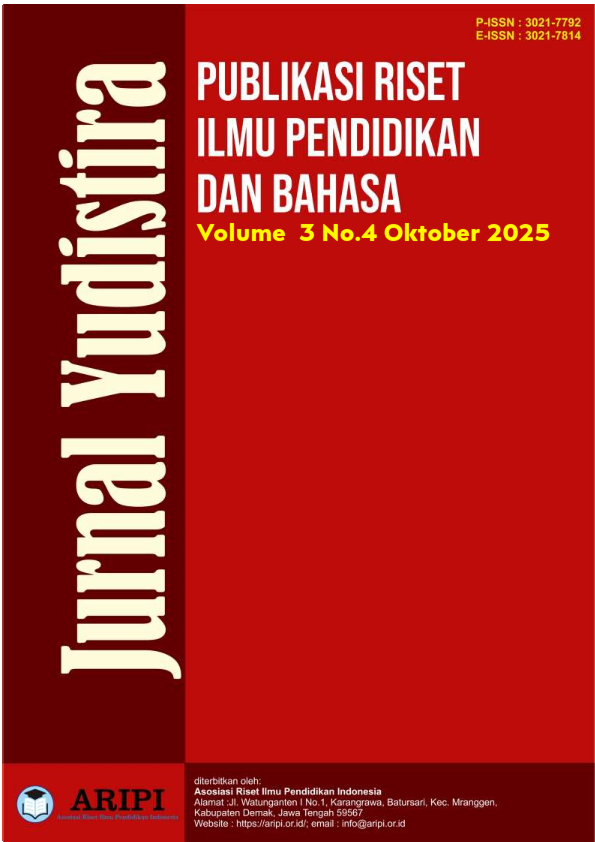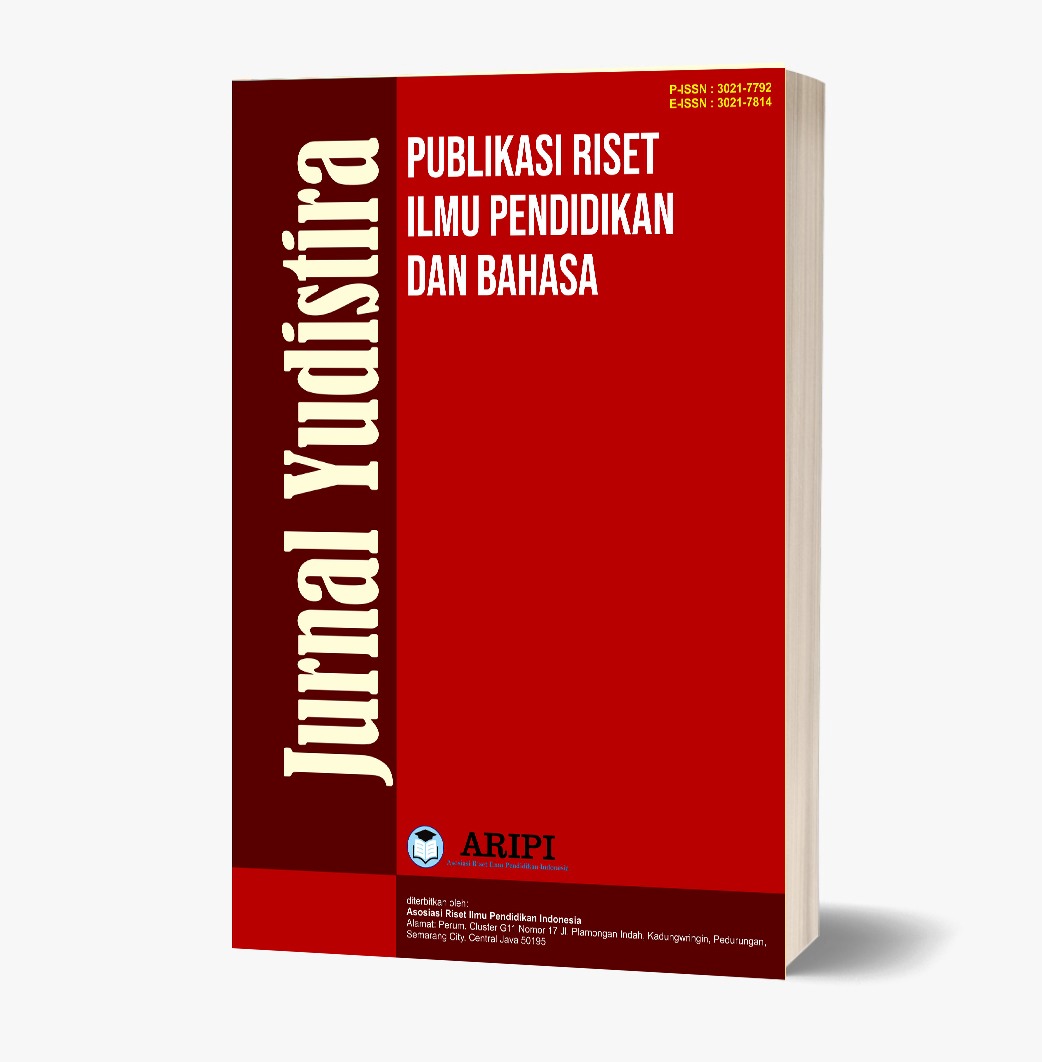Analisis Penggunaan Media Sosial (YouTube/TikTok) sebagai Media Pembelajaran Pendukung di Kalangan Pelajar Kelas XI SMAS Nurul Hasanah
DOI:
https://doi.org/10.61132/yudistira.v3i4.2391Keywords:
Islamic Religious Education, Islamic Religious Education Learning, Social Media, TikTok, YouTubeAbstract
This study aims to analyze the use of social media, specifically YouTube and TikTok, as supporting learning media in Islamic Religious Education (PAI) at Nurul Hasanah Senior High School. The background of this research stems from the phenomenon of increasing social media use among adolescents, known as digital natives, and the potential of digital platforms as educational tools. The study used a descriptive qualitative approach, with eleventh-grade students and PAI teachers as subjects. Data collection techniques included interviews, observation, and documentation. The results showed that YouTube was effective in providing in-depth explanations of PAI material, while TikTok emphasized delivering short, motivational, and engaging messages in line with the characteristics of digital generation students. The use of social media has been proven to increase student motivation, participation, and understanding in PAI learning. However, challenges arise from distractions from non-learning content, limited information validity, and the potential for misuse of digital devices in schools. The role of teachers is crucial as facilitators, content curators, and supervisors to ensure the effective and responsible use of social media. Furthermore, school policies that allow students to bring mobile phones under certain conditions namely, collecting them when not in use and allowing them during lessons have been shown to balance the need for learning innovation with discipline. In conclusion, social media such as YouTube and TikTok can be effective supporting learning tools in Islamic Religious Education (PAI) when integrated with appropriate pedagogical strategies, teacher guidance, and school policy support.
Downloads
References
Achmad Faqihuddin. (2024). Media Pembelajaran PAI: Definisi, Sejarah, Ragam dan Model Pengembangan. Idarotuna: Jurnal Manajemen Pendidikan Islam, 1(1), 1–15. https://doi.org/10.29313/idarotuna.v1i1.3780
Daniyarti, W. D., Asy’arie, B. F., & ... (2024). Pengembangan Pembelajaran Pendidikan Agama Islam Melalui Pemanfaatan Aplikasi Tik-Tok Untuk Meningkatkan Prestasi Belajar di SMP Negeri 1 Malang. Tarbawiyah …, 08. https://doi.org/10.32332/tarbawiyah.v8i2.9769
Eltaher, F., Gajula, R. K., Miralles-Pechuán, L., Crotty, P., Martínez-Otero, J., Thorpe, C., & McKeever, S. (2025). Protecting young users on social media: Evaluating the effectiveness of content moderation and legal safeguards on video sharing platforms. arXiv. https://arxiv.org/abs/2505.11160
Hasmiza, H., & Humaidi, M. N. (2023). Efektivitas Youtube Sebagai Media Pembelajaran Pendidikan Agama Islam Di Era Digitalisasi. Research and Development Journal of Education, 9(1), 97. https://doi.org/10.30998/rdje.v9i1.13928
Iffah, I., Supriadi, U., & Fakhruddin, A. (2024). A Konten TikTok Sebagai Media Pembelajaran Pendidikan Agama Islam Di SMP. Jurnal Riset Dan Inovasi Pembelajaran, 4(1), 644–654. https://doi.org/10.51574/jrip.v4i1.1333
IJTE. (2025). Effectiveness of TikTok in enhancing students’ digital learning outcomes: A quasi-experimental study. International Journal of Technology in Education (IJTE), 10*(2), 45-62. ijte.net
Ismaniyah, F., Syafi’i, I., Fahmi, M., & Thohir, M. (2024). Pemanfaatan Tiktok sebagai Inovasi Media Pembelajaran PAI di Abad 21. La-Tahzan: Jurnal Pendidikan Islam, 17(1), 30–40.
Juliana, D., Tambunan, A. R. S., & Pane, I. I. I. (2024). The use of YouTube and TikTok in improving students’ vocabulary achievement. Journal of English for Academic and Specific Purposes (JEASP), 7(2), 140–148. https://doi.org/10.18860/jeasp.v7i2.29036 ResearchGate
Nadita Fajarini, Habibah Amumpuni, Nur Ani Parida, & Meilisa Sajdah. (2024). Pengaruh Penggunaan TikTok sebagai Media Pembelajaran Pendidikan Agama Islam Pada Era 4.0. Jurnal Bintang Pendidikan Indonesia, 2(2), 163–172. https://doi.org/10.55606/jubpi.v2i2.2959
Nochumson, T. (2025). Exploring TikTok’s role in K-12 education: A mixed-methods study of teachers’ professional use. CiteJournal: Perspectives on Learning and Teaching, 25(1), 75-94. Cite Journal
Novianti, A. (2025). Analisis YouTube Sebagai Media Pembelajaran PAI Terhadap Hasil Belajar Siswa. AL-MURABBI: Jurnal Studi Kependidikan dan Keislaman, 11(2), 13-25. https://doi.org/10.53627/jam.v11i2.5910
Rakhmasari, D. L. (2024). The influence of social media short videos on Indonesians' English language learning through YouTube and TikTok. Leksika: Jurnal Bahasa, Sastra dan Budaya, 12(1), 45–60. Jurnal Nasional UMP
Ramdhani, R., Amril, A., & Sazali, M. (2025). Impact of Instagram and TikTok use on student motivation and academic engagement in Indonesian high schools. International Journal Education and Computer Studies (IJECS), 5(2), 103–113. https://doi.org/10.35870/ijecs.v5i2.4616 Lembaga KITA
Rasyid, F., & co-authors. (2023). Perceived impacts on students' competence: Views from English content shared via TikTok. International Journal of Language Teaching & Educational Research, 9(3), 315-330. ResearchGate
Saputra, R., Jalili, T., & Setiani, I. (2024). Exploring the Use of Short Video Social Media for Learning ESL in Indonesia. In Proceedings of the 32nd International Conference on Computers in Education (pp. 1-10). Asia-Pacific Society for Computers in Education. library.apsce.net
Sma, D. I., & Patamuan, N. (n.d.). O f a h. 5(November 2025), 5777–5791. https://doi.org/10.58578/tsaqofah.v5i6.7129
Downloads
Published
How to Cite
Issue
Section
License
Copyright (c) 2025 Jurnal Yudistira : Publikasi Riset Ilmu Pendidikan dan Bahasa

This work is licensed under a Creative Commons Attribution-ShareAlike 4.0 International License.







